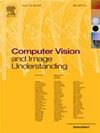基于多尺度特征融合的SAM高质量少镜头医学图像分割
IF 3.5
3区 计算机科学
Q2 COMPUTER SCIENCE, ARTIFICIAL INTELLIGENCE
引用次数: 0
摘要
由于自然图像与医学图像的显著差异,将分割万物模型(SAM)应用于医学图像分割领域是一项巨大的挑战。使用医学图像对SAM进行直接微调需要大量详尽注释的医学图像数据。为了解决这些问题,本文提出了一种新的方法——高质量少镜头分割全模型(HF-SAM),以实现高效的医学图像分割。我们提出了HF-SAM,它只需要少量的医学图像进行模型训练,并且不需要精确的医学线索来微调SAM。HF-SAM利用低阶自适应(Low-rank adaptive, LoRA)技术对SAM进行微调,利用SAM掩码解码器在图像嵌入中缺乏大的局部细节,以及高阶全局特征和低阶局部特征之间的互补性。此外,我们提出了一种自适应加权特征融合模块(AWFFM)和两步跳过特征融合解码过程。AWFFM在不抑制全局信息的情况下将低级局部信息集成到高级全局特征中,而两步跳过特征融合解码过程增强了SAM捕获细粒度信息和局部细节的能力。实验结果表明,HF-SAM在Synapse数据集上的Dice得分为79.50%,在ACDC数据集上的Dice得分为88.68%。这些结果优于现有的传统方法、半监督方法和其他SAM变体,用于少量医学图像分割。通过结合低秩自适应技术和自适应加权特征融合模块,HF-SAM有效地解决了SAM在医学图像分割中的适应性问题,在少样本情况下表现出优异的分割性能。该方法为医学图像分割领域提供了一种新的解决方案,具有重要的应用价值。HF-SAM的代码可在https://github.com/1683194873xrn/HF-SAM上获得。本文章由计算机程序翻译,如有差异,请以英文原文为准。
Multi-scale feature fusion based SAM for high-quality few-shot medical image segmentation
Applying the Segmentation Everything Model (SAM) to the field of medical image segmentation is a great challenge due to the significant differences between natural and medical images. Direct fine-tuning of SAM using medical images requires a large amount of exhaustively annotated medical image data. This paper aims to propose a new method, High-quality Few-shot Segmentation Everything Model (HF-SAM), to address these issues and achieve efficient medical image segmentation. We proposed HF-SAM, which requires only a small number of medical images for model training and does not need precise medical cues for fine-tuning SAM. HF-SAM employs Low-rank adaptive (LoRA) technology to fine-tune SAM by leveraging the lack of large local details in the image embedding of SAM’s mask decoder and the complementarity between high-level global and low-level local features. Additionally, we propose an Adaptive Weighted Feature Fusion Module (AWFFM) and a two-step skip-feature fusion decoding process. The AWFFM integrates low-level local information into high-level global features without suppressing global information, while the two-step skip-feature fusion decoding process enhances SAM’s ability to capture fine-grained information and local details. Experimental results show that HF-SAM achieves Dice scores of 79.50% on the Synapse dataset and 88.68% on the ACDC dataset. These results outperform existing traditional methods, semi-supervised methods, and other SAM variants in few-shot medical image segmentation. By combining low-rank adaptive technology and the adaptive weighted feature fusion module, HF-SAM effectively addresses the adaptability issues of SAM in medical image segmentation and demonstrates excellent segmentation performance with few samples. This method provides a new solution for the field of medical image segmentation and holds significant application value. The code of HF-SAM is available at https://github.com/1683194873xrn/HF-SAM.
求助全文
通过发布文献求助,成功后即可免费获取论文全文。
去求助
来源期刊

Computer Vision and Image Understanding
工程技术-工程:电子与电气
CiteScore
7.80
自引率
4.40%
发文量
112
审稿时长
79 days
期刊介绍:
The central focus of this journal is the computer analysis of pictorial information. Computer Vision and Image Understanding publishes papers covering all aspects of image analysis from the low-level, iconic processes of early vision to the high-level, symbolic processes of recognition and interpretation. A wide range of topics in the image understanding area is covered, including papers offering insights that differ from predominant views.
Research Areas Include:
• Theory
• Early vision
• Data structures and representations
• Shape
• Range
• Motion
• Matching and recognition
• Architecture and languages
• Vision systems
 求助内容:
求助内容: 应助结果提醒方式:
应助结果提醒方式:


